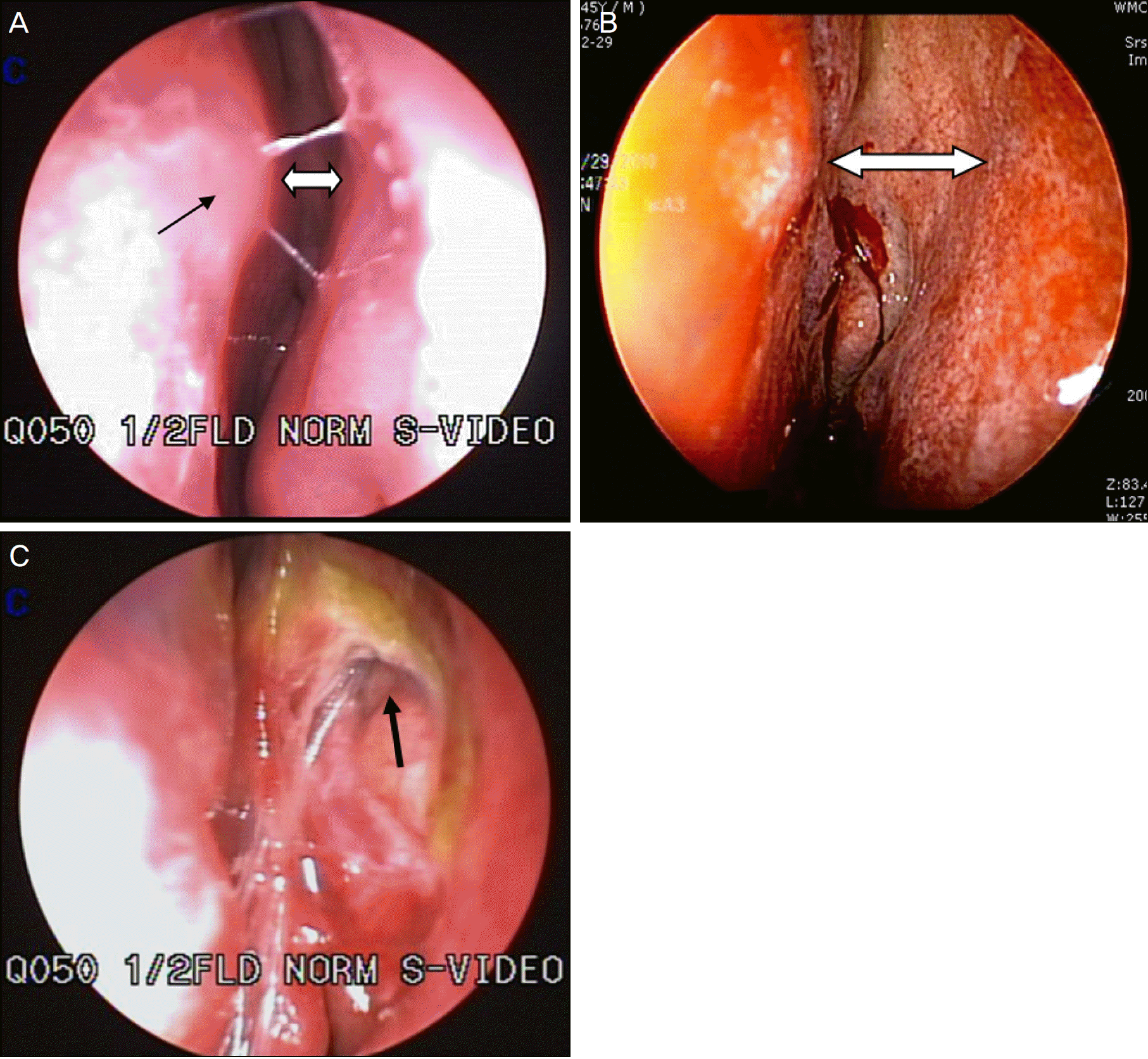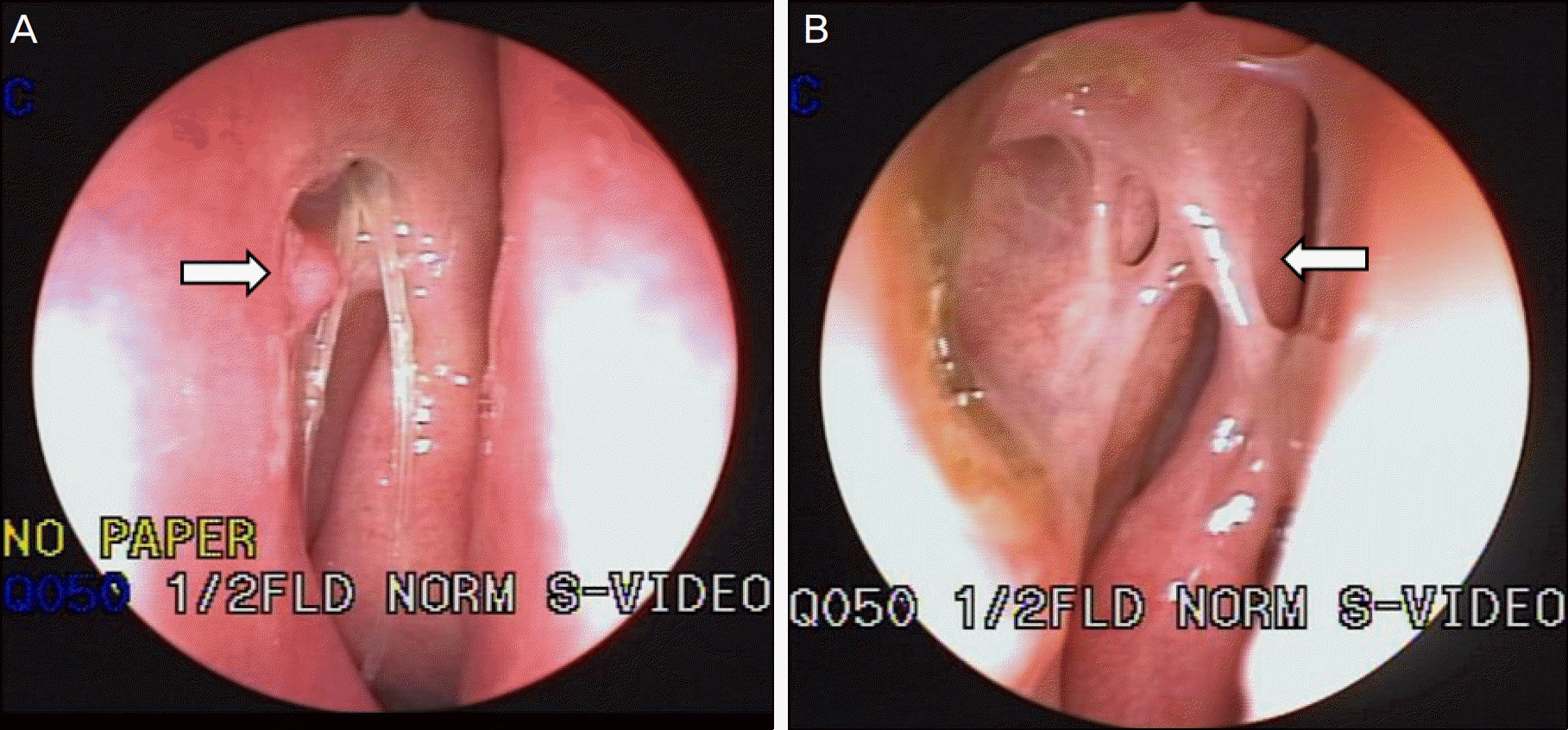Abstract
Purpose
To evaluate the clinical effect of endonasal dacryocystorhinostomy (DCR) and septoplasty combination surgery for lacrimal obstruction in patients with nasal septal deviation.
Methods
The study group consisted of 24 eyes of 24 lacrimal obstruction patients with nasal septal deviation who had undergone endonasal DCR combined with septoplasty from 2006 to 2012. The types of lacrimal obstruction included nasolacrimal duct obstruction (18 cases), common canaliculus obstruction (5 cases) and lower lacrimal duct obstruction (1 case). The operations' procedure was as follows: first, an otorhinolaryngologist performed septoplasty and then, an ophthalmologist performed endonasal DCR. For catamnesis observation after the surgery, the operations' results and nasal complications were retrospectively analyzed.
Results
A total of 24 eyes of 24 patients were included in the present study. Eight patients were males, 16 patients were females and the mean patient age was 52.1 years. During 15.5 months of catamnesis, loss of epiphora was observed in 20 cases, improvement in epiphora was found in 3 cases, and the functional and anatomical success rate was 95.8% (23/24). Eight cases of postoperative complication were observed, 7 cases of granuloma were found in the bony ostium and surrounding area, and 1 case of synechia was found in the nasal cavity.
Conclusions
The combination surgery of endonasal DCR and septoplasty provides a wider surgical view, allowing for an easier nasal cavity treatment, rendering the operation and after-care less difficult, as well as reducing the risk of surrounding tissue damage. This method is adequate for preventing complications after surgery and offers a better prognosis.
Go to : 
References
1. Caldwell GW. Two new operations for obstruction of the nasal duct with preservation of the canaliculi and an incidental description of a new lacrimal probe. Am J Ophthalmol. 1893; 10:189.
2. Toti A. Nuovo metodo conservatore di cura delle suppurazioni cro-niche del sacco lacrimale (dacriocistorinostomia). Clin Moderna Firenze. 1904; 10:385–7.
3. McDonogh M, Meiring JH. Endoscopic transnasal dacryocystorhinostomy. J Laryngol Otol. 1989; 103:585–7.

4. Lee DP, Yang SW, Choi WC. The relation between nasal cavity size and success rate in endonasal dacryo cys torhinostomy. J Korean Ophthalmol Soc. 2000; 41:1118–23.
5. Lee JJ, Woo KI, Kim YD. Middle turbinectomy during dacryocystorhinostomy. J Korean Ophthalmol Soc. 1997; 38:710–4.
6. Lee YJ, Moon SW, Cho HY, Jeong JH. Clinical outcome of abdominal with septal deviation. J Korean Ophthalmol Soc. 2008; 49:713–20.
8. Linberg JV, Anderson RL, Bumsted RM, Barreras R. Study of abdominal ostium external dacryocystorhinostomy. Arch Ophthalmol. 1982; 100:1758–62.
9. Lee HC, Chung WS. Success rate of endonasal dacryocystorhinostomy. J Korean Ophthalmol Soc. 1996; 37:211–8.
10. Mannor GE, Millman AL. The prognostic value of preoperative dacryocystography in endoscopic intranasal dacryocystorhinostomy. Am J Ophthalmol. 1992; 113:134–7.

11. Iliff CE. A simplified dacryocystorhinostomy. Trans Am Acad Ophthalmol Otolaryngol. 1954; 58:590–2.

12. Welham RA, Wulc AE. Management of unsuccessful lacrimal surgery. Br J Ophthalmol. 1987; 71:152–7.

13. Bumsted RM, Linberg JV, Anderson RL, Barreras R. External dacryocystorhinostomy. A prospective study comparing the size of the operative and healed ostium. Arch Otolaryngol. 1982; 108:407–10.

14. Kim JM, Hong WP, Choi YJ, Kim SJ. The effect of nasal cavity abdominal related to surgical success rate of endonasal dacryocystorhinostomy. J Korean Ophthalmol Soc. 2006; 47:1233–7.
Go to : 
 | Figure 1.Preoperative, intraoperative and postoperative findings of the left nasal cavity. (A) Preoperative image shows the narrow nasal cavity. (Black arrow head: deviated septum) (B) Postoperative image shows enough widening nasal cavity to see the inner structure. (C) This image shows the nasal ostium and silicone tubes. (Black arrow head: bony ostium) |




 PDF
PDF ePub
ePub Citation
Citation Print
Print



 XML Download
XML Download